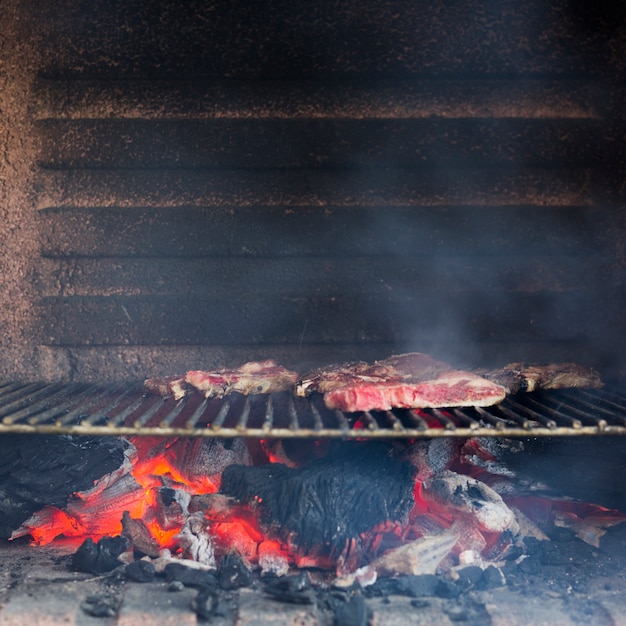How long does meat last if you smoke it?
Smoking meat is a popular cooking technique that imparts a unique flavor and tenderness to various cuts of meat. Whether you are smoking a brisket, ribs, or a whole chicken, it is important to understand how long smoked meat can last to maintain its quality and ensure food safety. In this article, we will explore the factors affecting the shelf life of smoked meat and provide guidelines on how to properly store and consume it.
Factors Affecting the Shelf Life of Smoked Meat
The shelf life of smoked meat depends on several key factors:
- Type of meat: Different types of meat have varying natural preservatives and fat content, which can affect their longevity when smoked. For example, pork is generally more prone to spoilage than beef.
- Smoking method: The smoking method employed plays a significant role in meat preservation. Cold smoking, which involves smoking at temperatures below 90°F (32°C), may not fully cook the meat and therefore has a shorter shelf life compared to hot smoking, where temperatures typically range between 225°F (107°C) and 250°F (121°C).
- Smoking duration: The length of time the meat is exposed to smoke can impact its shelf life. Extensive smoking sessions may increase the risk of bacterial growth and consequently reduce the overall storage period.
- Storage conditions: Proper storage is crucial in extending the shelf life of smoked meat. Factors such as temperature, humidity, and exposure to light can influence meat spoilage. It is essential to store smoked meat in a cool, dark place, like a refrigerator, to prevent bacteria from rapidly multiplying.
Guidelines for Storing Smoked Meat
To maximize the shelf life of smoked meat and ensure its safety, consider the following guidelines:
- Refrigerate promptly: After smoking, allow the meat to cool down at room temperature for no more than two hours before transferring it to the refrigerator. Bacterial growth accelerates rapidly within the temperature danger zone of 40°F (4°C) to 140°F (60°C).
- Wrap it properly: To maintain freshness and prevent exposure to air, tightly wrap the smoked meat in plastic wrap or aluminum foil. Alternatively, use airtight containers or vacuum-sealed bags to minimize oxygen contact.
- Store at the correct temperature: Ideally, smoked meat should be stored at temperatures between 32°F (0°C) and 40°F (4°C). A refrigerator set at around 35°F (1.6°C) provides suitable conditions for preserving the quality and flavor of the meat.
- Label and date: Properly labeling and dating the packages of smoked meat will help you keep track of their storage time. This practice allows you to prioritize consumption based on freshness and prevents consuming meat past its best-before date.
How Long Does Smoked Meat Last?
The shelf life of smoked meat can vary depending on the factors mentioned above. Generally, smoked meat can last for several days up to a few weeks when stored correctly in the refrigerator. However, it is important to remember that these are general guidelines and not rigid rules.
Quote: “While smoked meat can last for a significant period, it is always advisable to consume it within a reasonable timeframe to fully enjoy its flavor and quality.” – Chef John Smith
Here’s a general estimation of the average shelf life of different types of smoked meat:
| Type of Meat | Refrigerator Storage | Freezer Storage |
|---|---|---|
| Beef Brisket | 5-7 days | 2-3 months |
| Pork Ribs | 3-4 days | 1-2 months |
| Whole Chicken | 2-3 days | 9-12 months |
It’s important to note that these timeframes are approximate and can vary depending on individual factors such as the specific cut of meat, smoking technique, and storage conditions.
Signs of Spoilage
Even with the proper storage techniques, smoked meat can eventually spoil. It is crucial to be able to identify signs of spoilage to prevent foodborne illnesses. Here are some common indicators that smoked meat has gone bad:
- Unpleasant odor: If the smoked meat develops an off-putting, rancid smell, it is likely spoiled and should not be consumed.
- Mold growth: The presence of mold on the surface of smoked meat is a clear indication of spoilage. Discard the meat to avoid potential health risks.
- Texture changes: Spoiled smoked meat may feel slimy or unusually dry and tough to the touch. Such changes in texture suggest bacterial growth and degradation.
- Abnormal color: If the meat appears discolored or exhibits patches of unusual colors, it is best to err on the side of caution and discard it.
When in doubt, always prioritize food safety over taste, and if you suspect that the smoked meat has gone bad, it is recommended to dispose of it.
In conclusion, the shelf life of smoked meat can be extended by employing proper smoking techniques, storing it at suitable temperatures, and following good food handling practices. By understanding the factors affecting its longevity and being mindful of signs of spoilage, you can enjoy delicious smoked meat while minimizing health risks.
How long can meat sit after smoking?
Smoking meat is a popular cooking technique that imparts a unique flavor and tenderness to the meat. However, once the meat has been smoked, it’s essential to handle and store it properly to ensure both safety and taste. So, how long can meat sit after smoking?
Why is proper handling important?
Proper handling of smoked meat is crucial to prevent the growth of harmful bacteria, such as Salmonella or E. coli, that can lead to foodborne illnesses. The smoking process doesn’t fully cook the meat, so any potential pathogens present in the meat are not completely eliminated.
The recommended resting time
After smoking meat, it is generally recommended to let it rest for about 10-20 minutes before slicing. This resting time allows the juices to redistribute within the meat, resulting in a more flavorful and tender final product. However, this resting period is not meant for long-term storage.
Storing smoked meat
If you have leftovers or want to store smoked meat for later consumption, it’s essential to follow proper storage guidelines. Once the meat has cooled down, it should be refrigerated promptly. Smoked meat can be safely stored in the refrigerator for 3-4 days. After that, it is advisable to freeze the remaining portions to maintain quality and prevent bacterial growth.
Tip: To lengthen the storage time, consider vacuum-sealing the smoked meat before refrigerating or freezing. This helps to preserve the flavors and texture for an extended period.
Freezing smoked meat
Freezing smoked meat can significantly extend its shelf life. It is best to wrap the meat tightly in freezer-safe packaging to prevent freezer burn. Label the package with the date to keep track of its freshness. Properly stored, smoked meat can remain safe in the freezer for up to 2-3 months.
How long can smoked BBQ sit out?
Smoked BBQ is a delicious and popular dish enjoyed by many in the UK. However, it’s important to know how long it can safely sit out to avoid any foodborne illnesses. Proper handling and storage are key to ensuring the safety and quality of your smoked BBQ.
Understanding food safety guidelines
According to the UK Food Standards Agency, perishable foods like smoked BBQ should not be kept at room temperature for more than 2 hours. This is because harmful bacteria can multiply rapidly between the temperatures of 8°C (46°F) and 63°C (145°F).
Storage and serving tips for smoked BBQ
- Refrigerate promptly: After smoking your BBQ, make sure to refrigerate it within 2 hours of cooking. This will help slow down bacterial growth and preserve the freshness of the meat.
- Properly wrap and store: Wrap your smoked BBQ tightly in aluminum foil or store it in airtight containers to prevent cross-contamination and maintain moisture.
- Reheating leftovers: If you have leftover smoked BBQ, ensure it is reheated to an internal temperature of 75°C (167°F) before consuming.
- Use within a few days: It is generally recommended to consume smoked BBQ within 3-4 days if stored properly in the refrigerator.
Signs of spoilage
It’s essential to know the signs of spoilage to avoid consuming smoked BBQ that may be unsafe to eat. If you notice any of the following, it’s best to discard the BBQ:
- Foul or off smell
- Mold or unusual discoloration
- Slimy texture
- Visible signs of spoilage or decay
Remember, it’s always better to be safe than sorry when it comes to food safety. Taking proper precautions and following food handling guidelines will help ensure that your smoked BBQ is enjoyed safely by all.
By adhering to the recommended storage and serving tips, you can safely enjoy your delicious smoked BBQ without worrying about foodborne illnesses. So, go ahead and indulge in this mouthwatering dish, just remember to handle and store it properly!
Can you leave pork in smoker overnight?
Leaving pork in a smoker overnight is a common practice among barbecue enthusiasts. It allows the meat to cook slowly and absorb the smoky flavors, resulting in tender and flavorful pork. However, there are some important factors to consider before leaving pork in the smoker overnight.
Safety concerns
Food safety should always be a top priority. Leaving pork in the smoker for an extended period increases the risk of bacteria growth if proper precautions are not taken. The general rule of thumb is to avoid leaving perishable food unrefrigerated for more than two hours.
When it comes to pork, it’s crucial to ensure that the internal temperature reaches at least 145°F (63°C) to kill any harmful bacteria, such as Salmonella or E. coli.
Planning and preparation
If you decide to leave pork in the smoker overnight, it is essential to plan and prepare ahead of time.
- Choose the right cut: Opt for a larger cut of pork, such as a pork shoulder or pork butt, as they are more forgiving and won’t dry out easily during the long cooking process.
- Season the meat: Rub the pork with your favorite seasonings or marinade to enhance its flavor.
- Monitor the temperature: Use a reliable meat thermometer to keep track of the internal temperature throughout the smoking process.
Considerations during the smoking process
During the overnight smoking process, it is important to make certain adjustments to ensure the pork stays safe and retains its quality.
- Control the temperature: Maintain a consistent and safe smoking temperature, typically between 225°F (107°C) and 250°F (121°C).
- Use a water pan: Placing a water pan in the smoker can help regulate the temperature and keep the meat moist.
- Add additional wood chips: Depending on your smoker, you may need to add more wood chips throughout the cooking process to maintain smoke production.
By following these guidelines and taking necessary precautions, you can safely leave pork in the smoker overnight and enjoy a deliciously smoked meal the next day. Remember, maintaining proper food safety practices is key to ensure the meat is both flavorful and safe to consume!
Conclusion
While the resting period after smoking meat is relatively short, it is crucial to follow proper storage guidelines to maintain its safety and quality. Always refrigerate or freeze smoked meat promptly to prevent bacterial growth. Remember, if in doubt about the safety of stored meat, it’s better to discard it to avoid potential foodborne illnesses.
“Proper handling and storage of smoked meat are key to enjoying its delicious flavors without compromising your health.”



